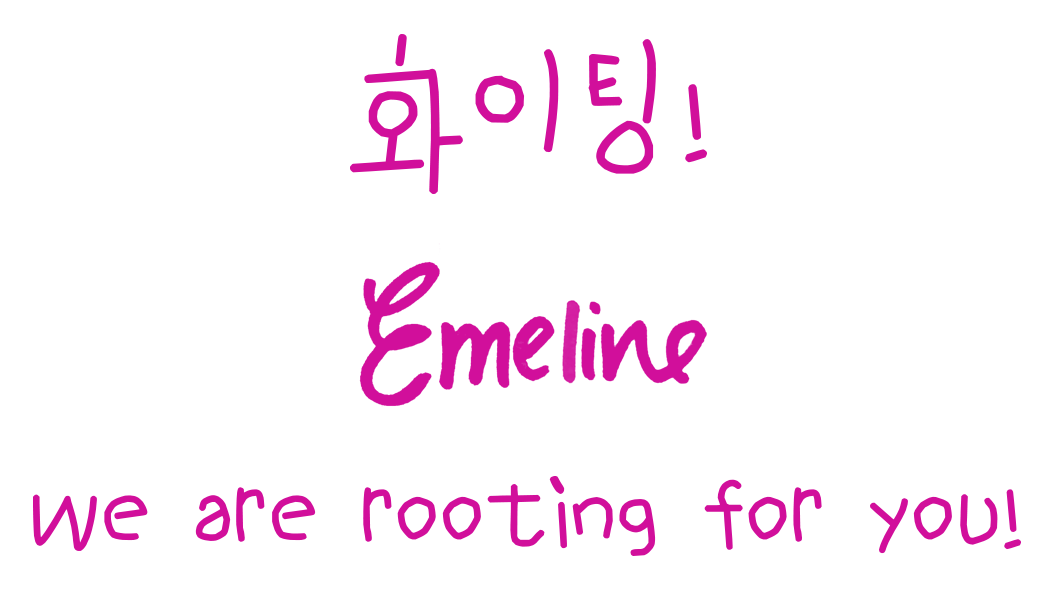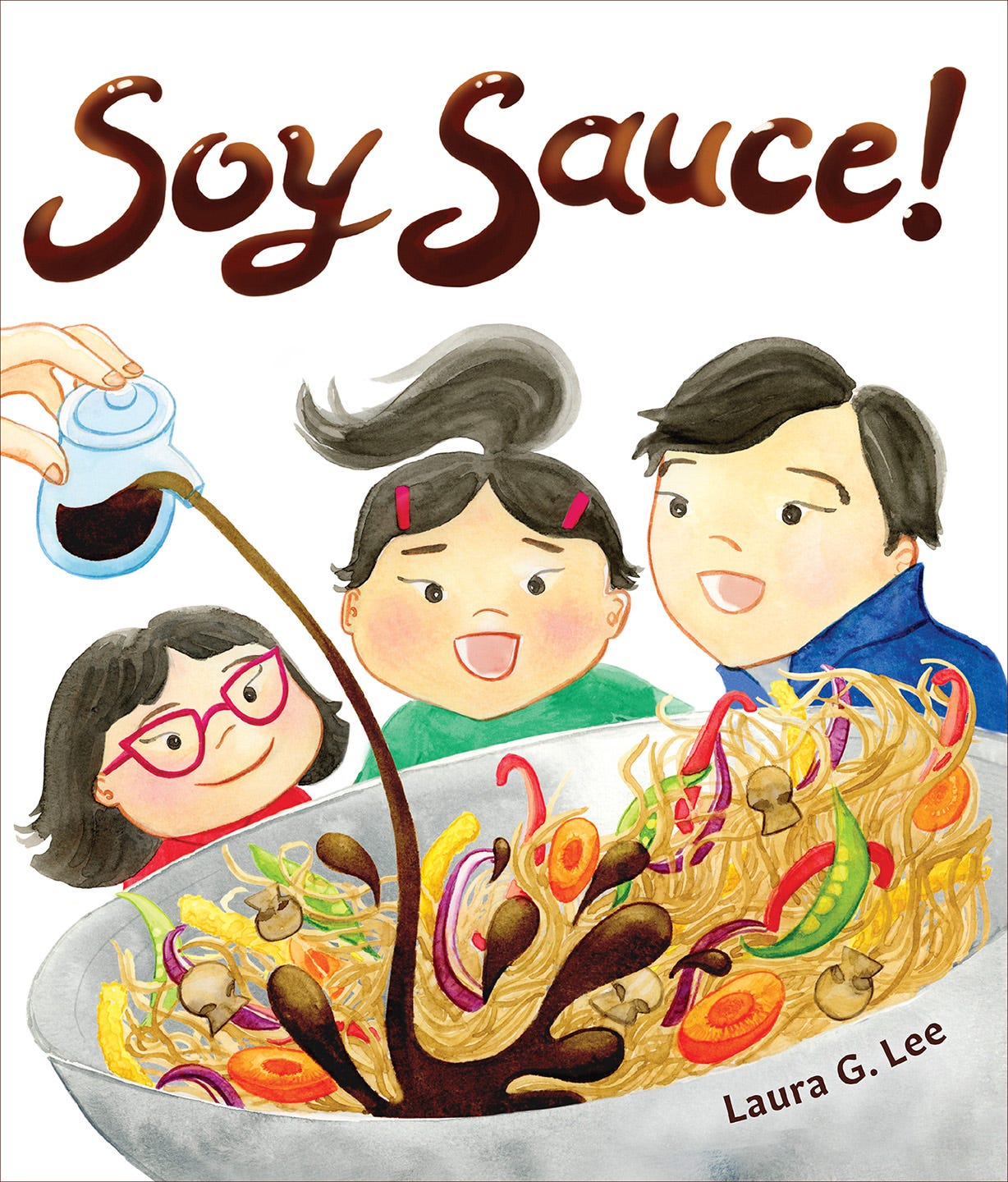Hello KP!
This week, we’re in for a special treat as author-illustrator Laura G. Lee shares stories and insights behind her debut picture book, Soy Sauce! She and I met and connected at the Asian and Asian American Voices Retreat with the Highlights Foundation, and I’ve been a huge fan of hers ever since. Soy Sauce! is a delicious delight that highlights how three different Asian cultures make the iconic sauce for us to enjoy. One of my favorite behind-the-scenes tidbits is that Laura painted the illustrations with actual soy sauce, adding a flavorful layer to her vibrant watercolor art. Even if we can’t taste it (no licking books!), we can certainly see how its addition enriches the pages of this beautiful book. Please welcome Laura for this month’s mini memoir!
Soy Sauce Stories by Laura G. Lee
LAURA G. LEE is a second-generation Komerican children's book author and illustrator, who is passionate about stories that spark our connection to the world and one another. Laura's recent picture book release, SOY SAUCE!, took her on an adventure exploring cross-cultural culinary histories, and painting with soy sauce. When she's not making books, you may find her in her kitchen adding soy sauce to make tasty food even more delicious, or out on a hunt for authentic Korean-Chinese jajangmyeon (a black bean noodle dish popular in 1960s Seoul). She lives in northern California with her husband, son, and daughter and you can find her work online at lauragleestudio.com or on Instagram: @lauragleestudio.
My parents came to the United States from South Korea in the 1960s, and moved around a lot for my dad's medical training before they settled in Charleston, West Virginia, where they chose to set down their roots. My mom used to muse that Charleston reminded them of Seoul, a city surrounded by mountains and divided by a river. But that is where the similarity ended. Growing up in Charleston there were very few Asian families around us, and the culture was predominantly White.
Growing up in WV during the 1980s, my sister and I had very little connection to Korean culture and cuisine in our lives. When my parents craved home cooking, they had to drive two or three states over to find ingredients at a Korean grocery store. My mom often told me with great longing how much she missed certain foods like kimchi jigae, and how she craved Korean flavors terribly during her two pregnancies. There were no bowls of miyeok guk, a traditional postpartum seaweed soup to heal her body and comfort her mind in her early days of motherhood with us. Her yearnings were like ghost limbs, intensely real but beyond reach. My dad never expressed his own longing, but I do remember the day he received a package of carefully wrapped yaksik from his family—his favorite childhood dessert. I saw his face soften in recognition of the hands that shaped the soy sauce and honey-seasoned sticky rice, filled with dried fruit and caramelized chestnuts. He unwrapped it like a treasure.
Like many other immigrant families 'stranded' from their culinary roots, my parents had to make do with what we had. But the one thing my family did have access to in the 1980s was soy sauce. Sold at our local Krogers grocery store, soy sauce allowed my mom to recreate Korean dishes substituting local ingredients. She often added soy sauce to Western-style dishes to augment their flavor, bringing umami to grilled meats and her delicious spaghetti Bolognese. While I truly love soy sauce, and it brings me back to family meals eaten throughout my childhood, my most salient memory of it was a conflicting one.
I remember one morning waking up after a sleepover party at my house, and my mom was making scrambled eggs. I was feeling high from a night of friendship and connection when my mom called over to me (in front of all of my non-Asian friends), "Laura, do you want soy sauce on your scrambled eggs?" My friends' eyes widened with disgust, "Soy sauce on eggs? That is SOOO GROOSSS!" Another friend chimed in, "The only thing that belongs on scrambled eggs is ketchup.' I was mortified. That was the moment I realized I was split between two worlds—an Asian one and American one—and the two did not meet. Loving soy sauce felt synonymous with being Asian, and even though I found it to be undeniably delicious, it made me an outsider.
Years later, when I began working on my picture book, Soy Sauce!, I could not help but think about what that moment meant to me then, and what it means to me today. The world has changed. Soy sauce today is one of the most popular kitchen staples in America, if not the world. It's deliciousness is irrefutable. And like being 'Asian,' soy sauce is not just a homogenous thing. It is complex, diverse, with a rich history that spans the globe.
As I researched its history, I discovered some fascinating facts. I learned that soy sauce was first invented over 2,000 years ago, and first traveled to Europe by Dutch traders in the 1670s. It was loved so much by King Louis the XIV of France that he served it at his royal banquets. And, it was a key ingredient in the very British Lea & Perrins Worcestershire sauce, whose top secret recipe was leaked in the 1980s and included: 'water, cloves, salt, fish, vinegar, lemons, peppers, pickles, sugar, and 'gallons' of soy.' I was stunned to discover the connection between Indonesian soy sauce, kecap manis, and the origins of ketchup in Patricia Tanumihardja's Serious Eats article. Take that, childhood-friend-who-said-the-only-thing-that-belongs-on-scrambled-eggs-is-ketchup! The more I uncovered, the more I realized how soy sauce actually connects us all.
Despite our divided world, we are all (for now) human. We all enjoy tasty home-cooked food around the family dinner table. Though I was initially inspired to write Soy Sauce! to create a bridge to my own cultural identity, the true story of soy sauce is that it is a bridge between cultures. I deeply thank my mom for offering me soy sauce on my eggs that morning—if I hadn't felt so incredibly divided, I never would have given soy sauce a second glimpse.
A Dollop of Fun: Soy Sauce!
Hungry for a great next read? Check out Laura’s book, Soy Sauce! Journey with Luan, Haru, and Yoo-mi as they follow three different methods for making soy sauce inspired by the traditions of their cultures. Stunning visuals showcase the complex and careful process of preparing this staple ingredient of Asian cuisine, and how sharing its delicious flavor brings us all together.










